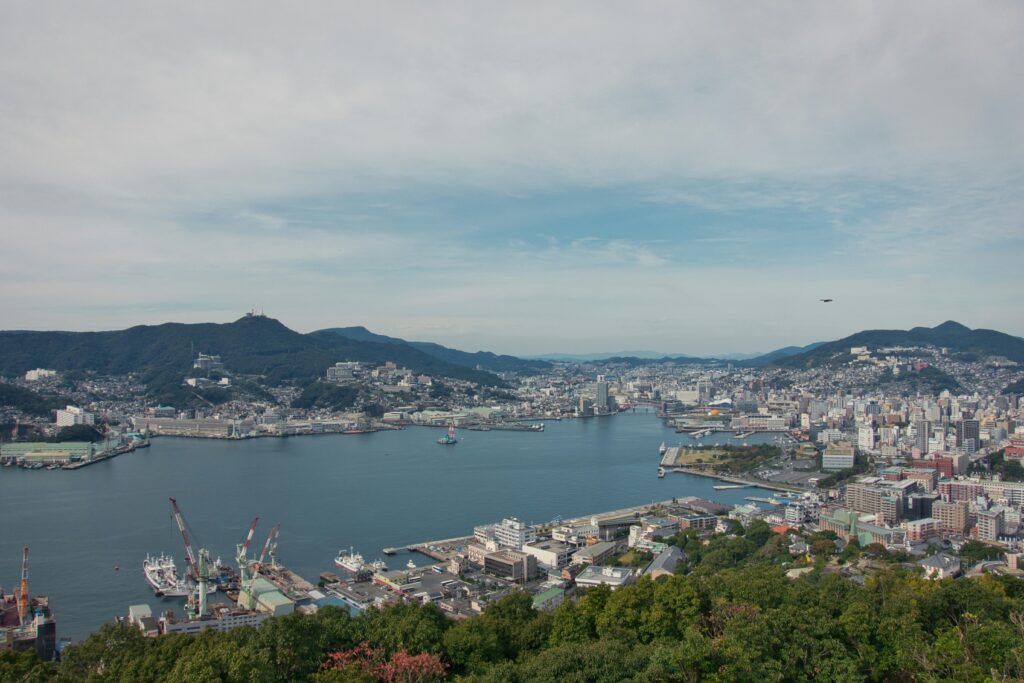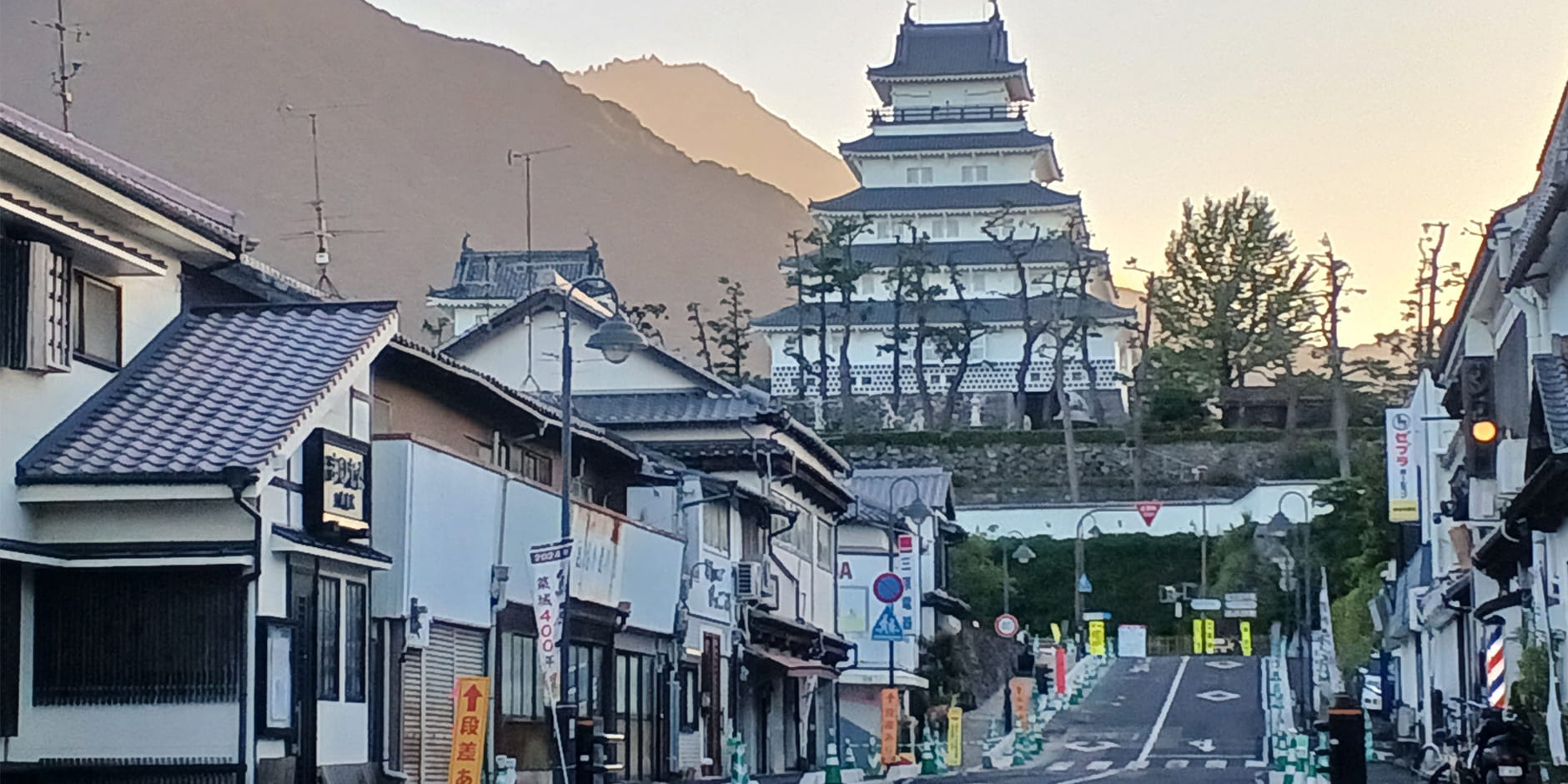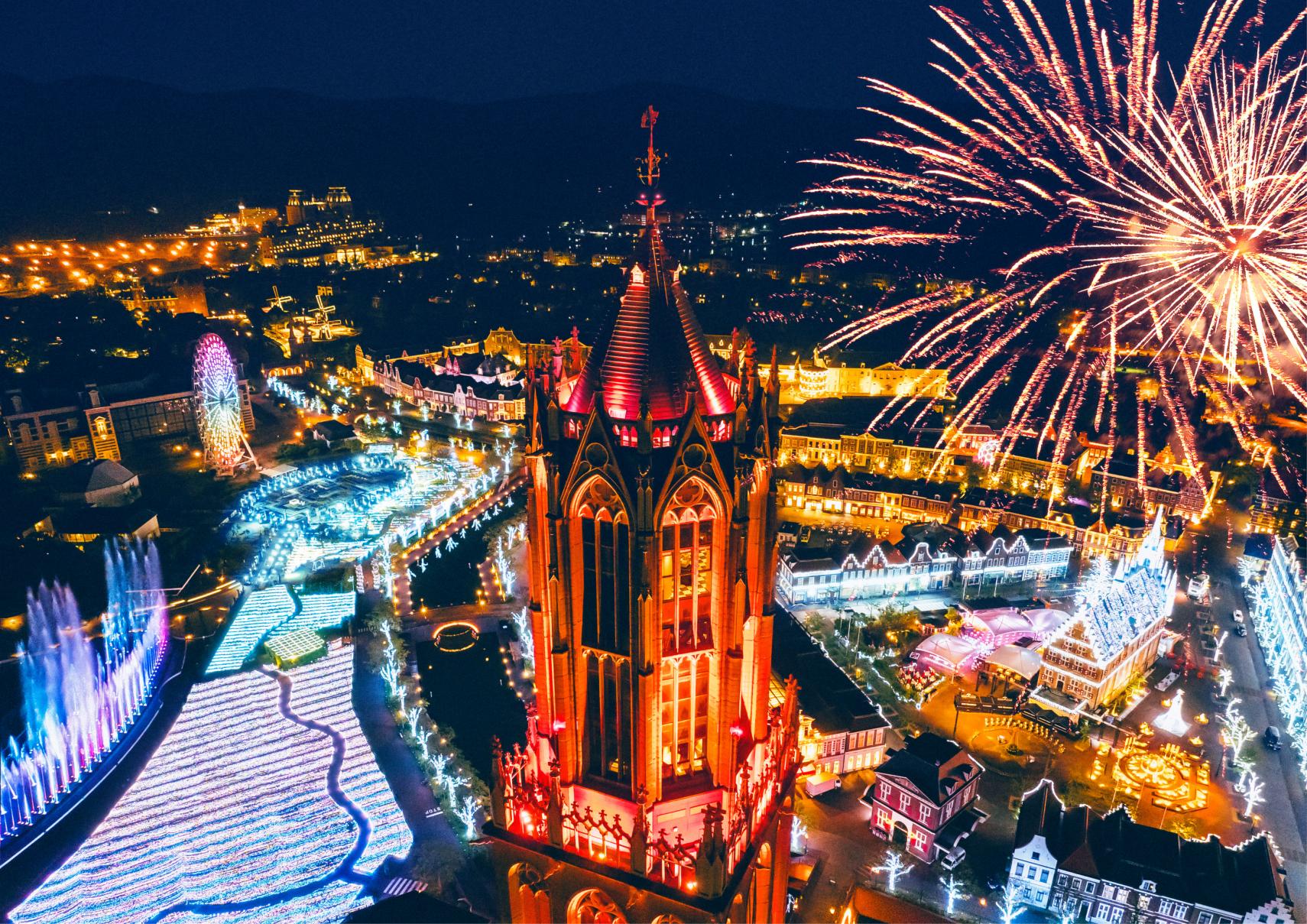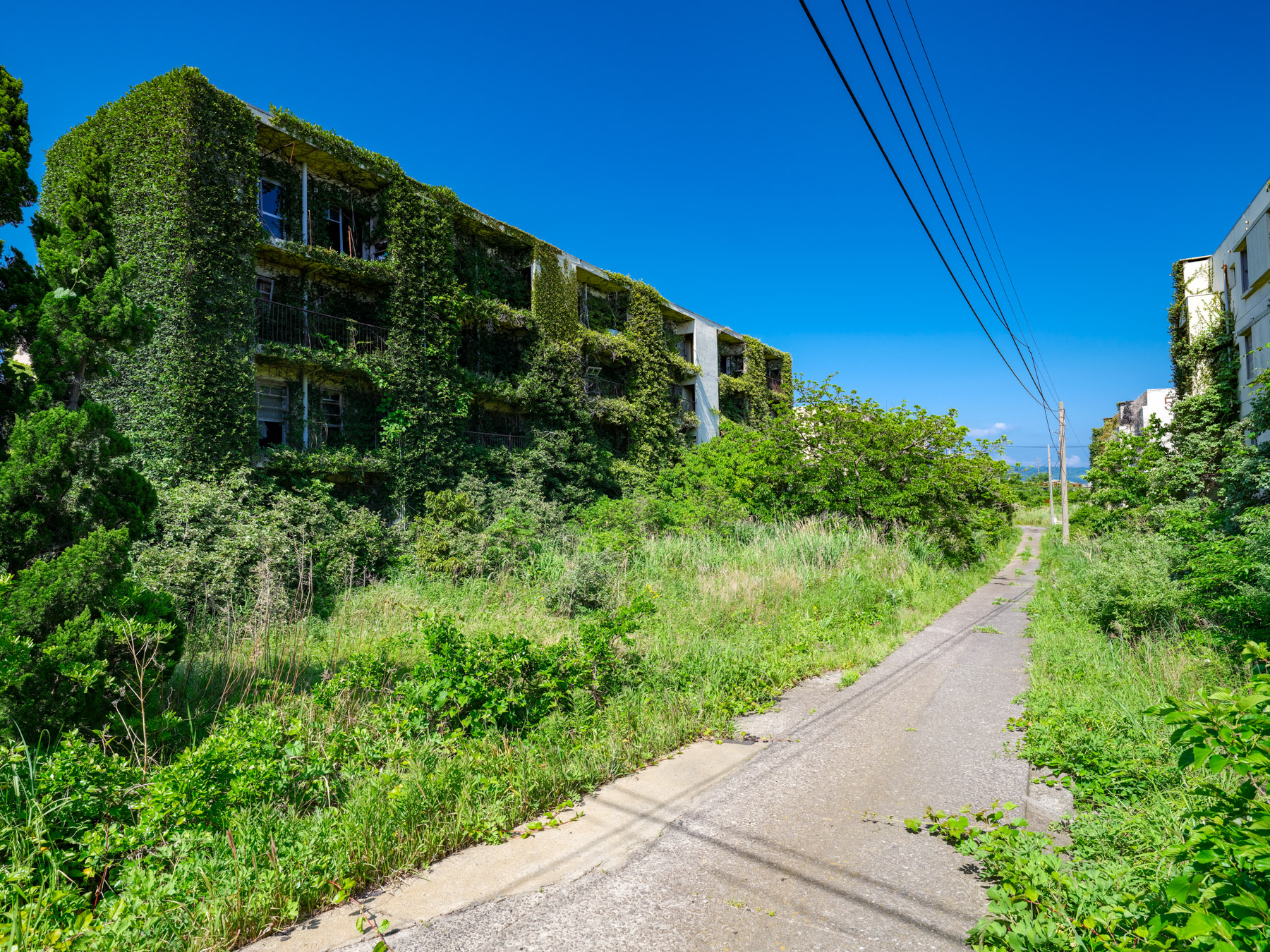Nagasaki Prefecture
It’s a place where cobbled streets echo centuries of cultural exchange, and quiet islands hold secrets of forgotten stories. From the solemn peace parks to neon-lit festivals, Nagasaki isn’t just visited—it’s felt. You’ll find Dutch-style towns, volcanic landscapes, coastal beauty, and dishes seasoned with global influence. This is Kyushu’s crossroads—where Japan meets the world, then invites you to explore it all.
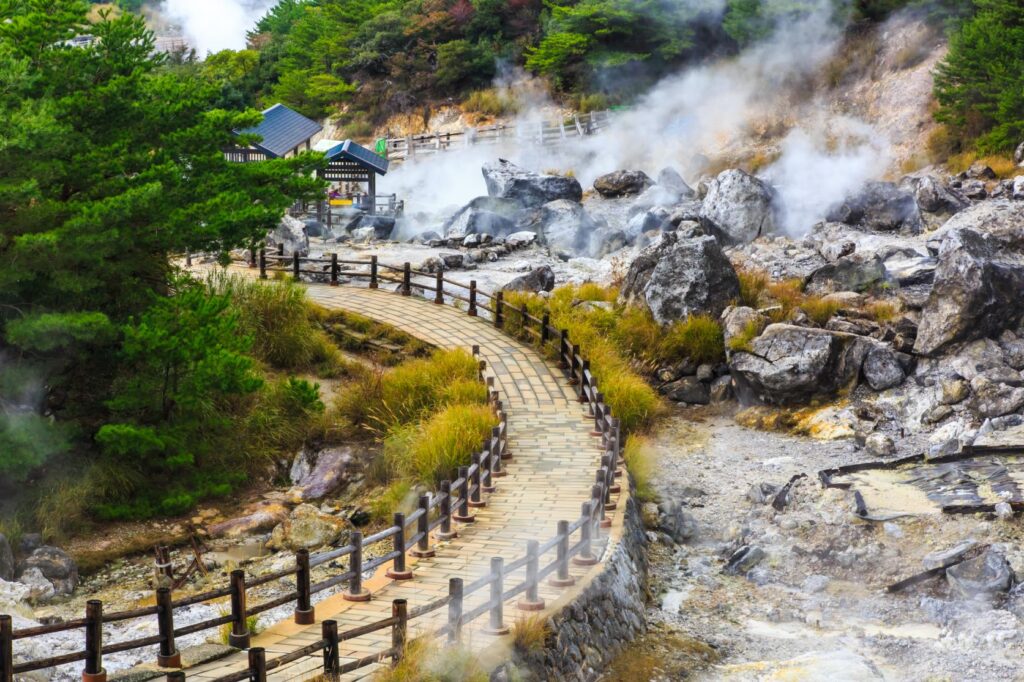
The Gateway of Cultures
Nagasaki Prefecture, located on the western edge of Kyushu, has long been Japan’s window to the outside world. It was here that international trade first flourished during the Edo period, and the legacy of that cultural exchange lives on in its architecture, cuisine, and diverse communities. From European-style churches and Dutch-influenced buildings to traditional temples and serene hot springs, Nagasaki offers a mix that feels both deeply Japanese and unmistakably global.
Beyond its storied past, Nagasaki is full of natural beauty—from volcanic mountains and lush coastlines to the remote, island-dotted seascape of the Goto Islands. The prefecture is also home to poignant reminders of history, such as the Nagasaki Peace Park and Atomic Bomb Museum, as well as celebrations of resilience and joy like the vibrant Nagasaki Lantern Festival.
Whether you’re wandering the quiet alleys of Shimabara, relaxing in the historic hot springs of Unzen, or sailing to hidden island villages, Nagasaki reveals a side of Japan that is layered, peaceful, and unforgettable.
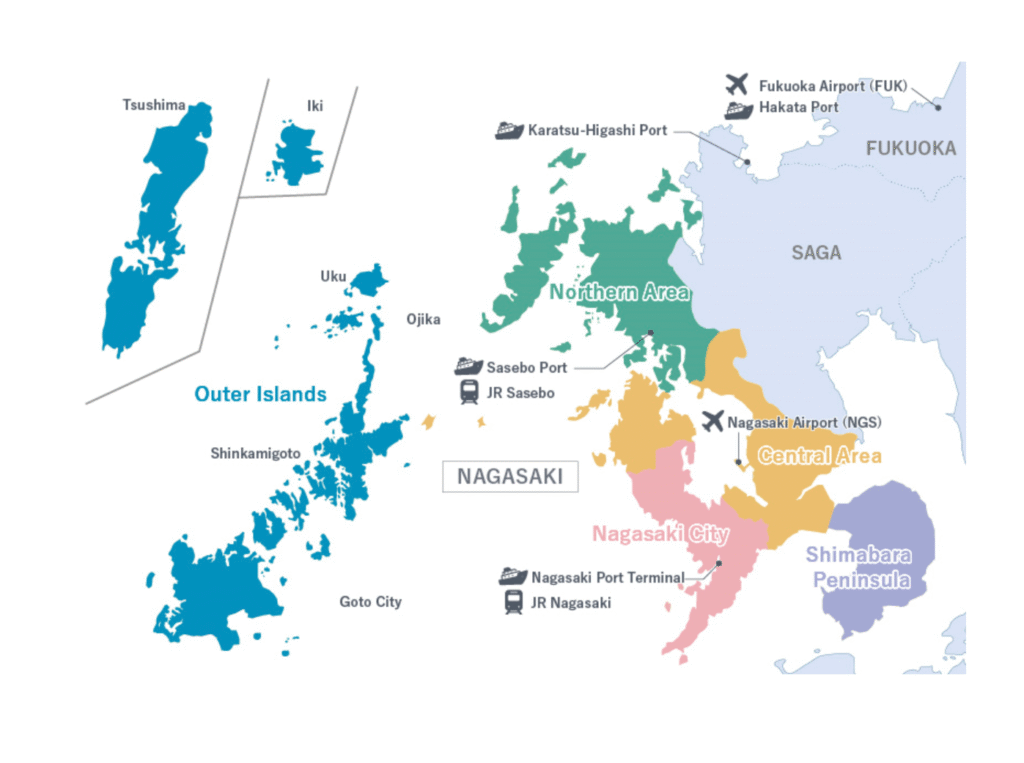
North and Islands
Central
Nagasaki City
Shimabara Peninsula
Goto Islands
Shimabara
Unzen Ropeway
Huis Ten Bosch
Ikeshima
Remote and stunningly beautiful, the Goto Islands are known for white-sand beaches, historic hidden Christian sites, and slow island life. With clear waters and peaceful fishing villages, it’s the perfect place to disconnect and explore untouched Japan.
In Shimabara City, crystal-clear spring water flows through the streets — so clean that koi fish swim in the roadside drainage canals. It’s a surreal and peaceful sight that reflects both natural beauty and community pride.
Ride the Unzen Ropeway for panoramic views over lush forests and volcanic peaks. Especially stunning during autumn, this area is part of Japan’s first national park and offers hiking, onsen, and historical intrigue tied to early Christian persecution.
A full-scale Dutch-themed resort park with canals, tulips, and windmills — Huis Ten Bosch is surreal in the best way. It also boasts cutting-edge digital art displays, seasonal light shows, and fun attractions that appeal to all ages.
Once home to a thriving coal mine, Ikeshima is now a semi-abandoned island where a few residents remain. You can tour the mine ruins and workers’ apartments, offering a haunting, thought-provoking glimpse into Japan’s industrial past.
Local Favorites
Gunkanjima
Huis Ten Bosch
Shimabara Castle
Lantern Festival
Unzen
Nagasaki Prefecture seasons
🌸 Spring
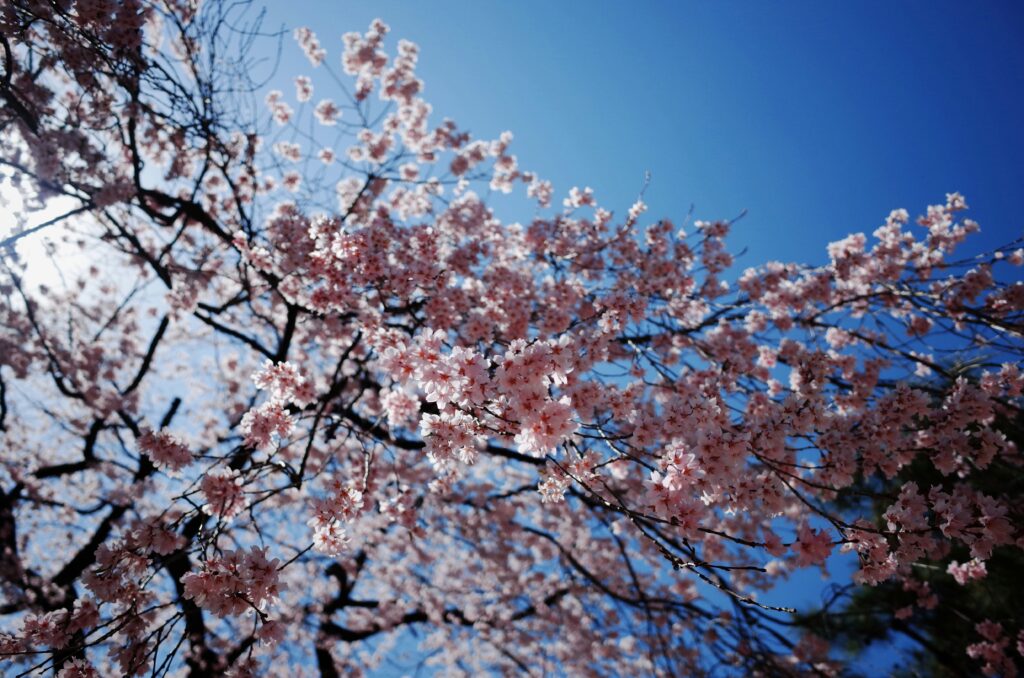
10°C to 22°C
Sakura Season: Late March to early April
☀️ Summer
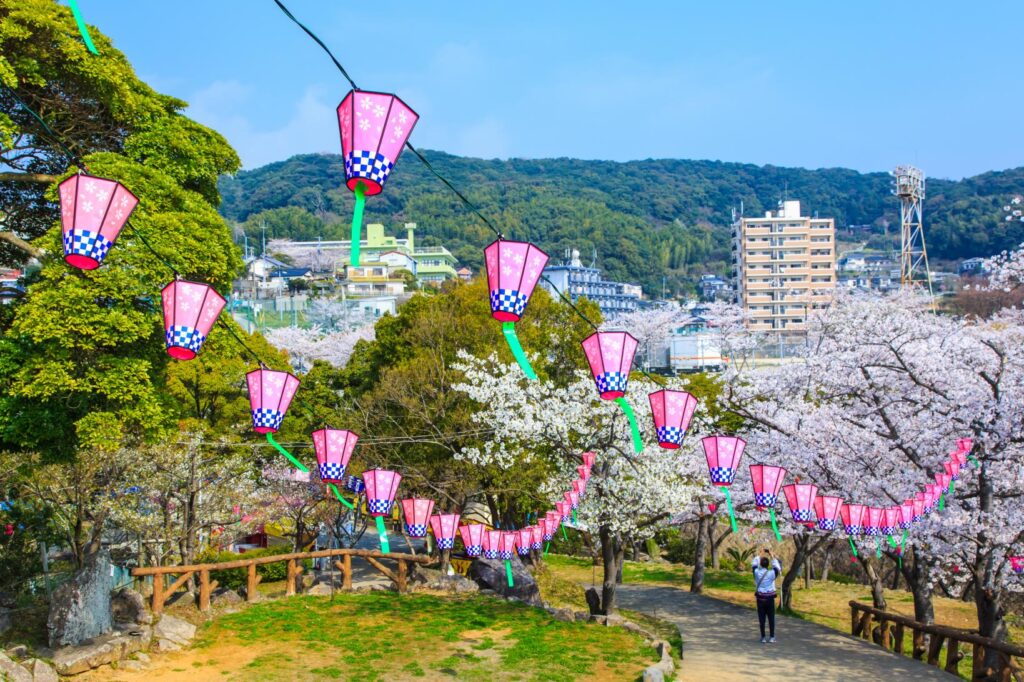
23°C to 32°C
Hot and humid with occasional typhoons
🍁 Autumn
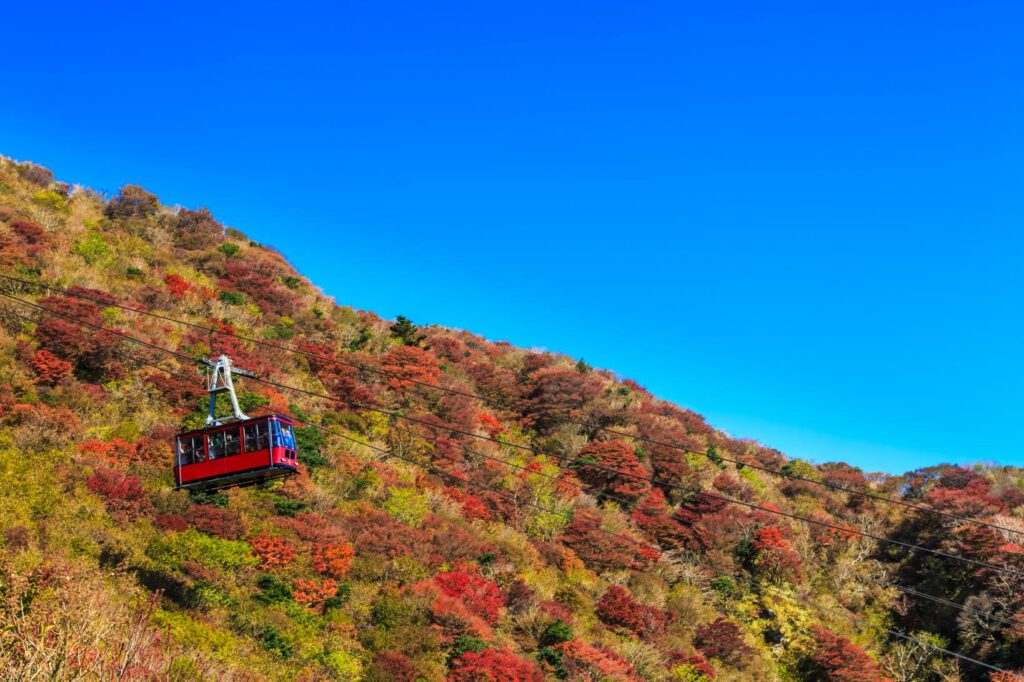
14°C to 26°C
Autumn Leaves: Mid November to early December
❄️ Winter
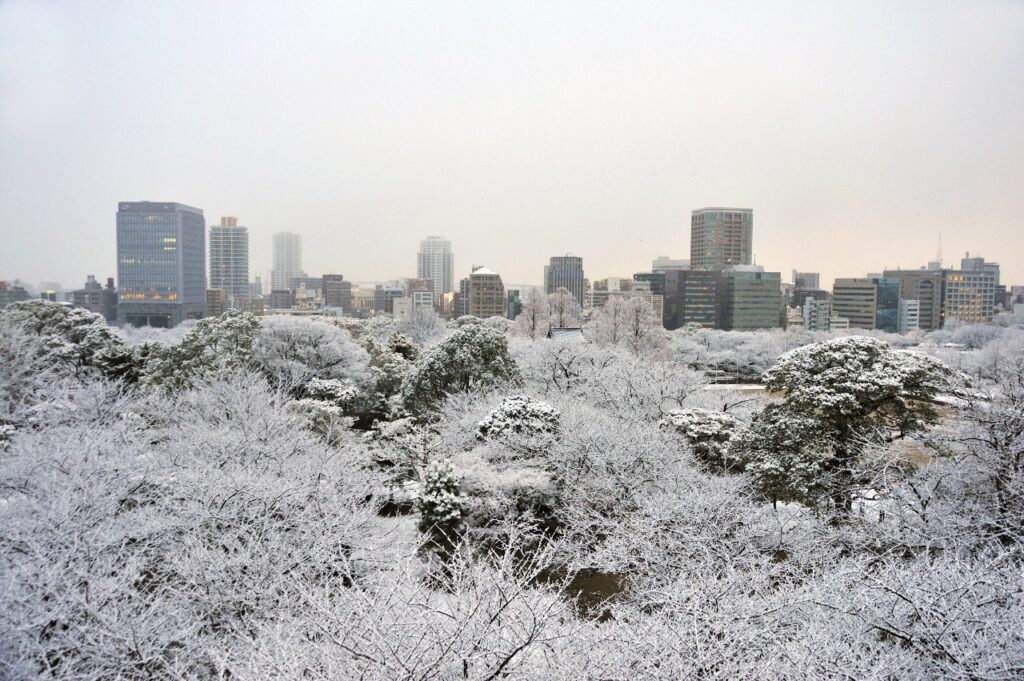
5°C to 12°C
Mild compared to much of Japan, but can feel crisp near the sea
Out There and Worth It
How to get to Nagasaki
Getting to Nagasaki is straightforward whether you’re coming from elsewhere in Japan or abroad. The quickest way is by air—Nagasaki Airport offers convenient domestic flights from Tokyo, Osaka, and Fukuoka, plus some international connections. From the airport, a bus or taxi ride takes you directly into the city center in about 40 minutes.
If you prefer to travel by train from Fukuoka, take the Limited Express (super express) train from Hakata Station to Takeo Onsen Station. From Takeo Onsen, you transfer to the Shinkansen (bullet train) that runs to Nagasaki Station. The whole journey takes about 1.5 hours.
For a more scenic journey, consider taking a highway bus or car ferry from nearby ports.
Whether you’re looking for speed or a leisurely approach, Nagasaki’s location makes it accessible and welcoming to travelers of all types.
